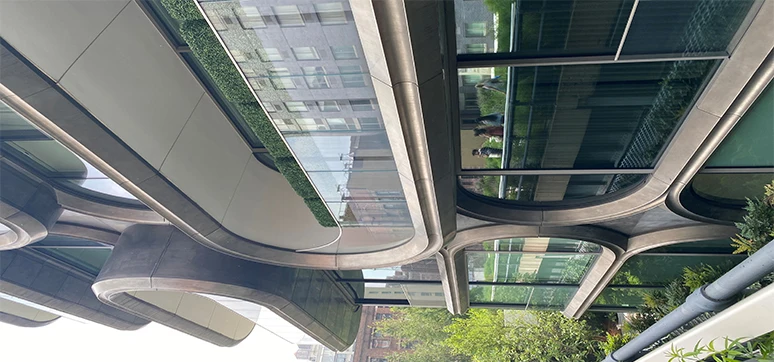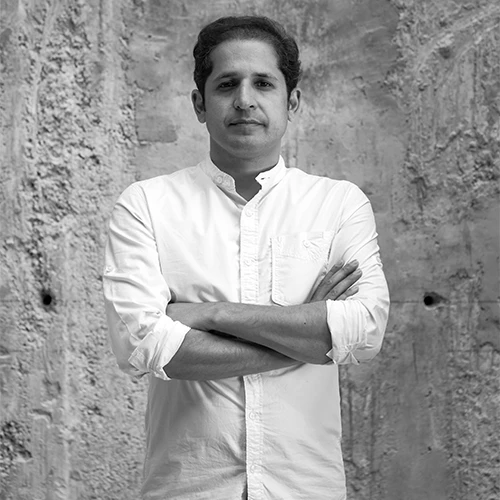The world of architecture is constantly evolving, and one of the most dynamic aspects is façade design. In the past year, several trends have emerged, reshaping the way buildings present themselves to the world. From innovative materials to sustainable practices, the façade landscape has witnessed a fascinating transformation.
One notable trend that gained momentum in the past year is the use of dynamic façades. Architects and designers are increasingly incorporating elements that can adapt to changing conditions. Dynamic façades respond to environmental factors such as sunlight, temperature, & wind, optimising energy efficiency and user comfort.
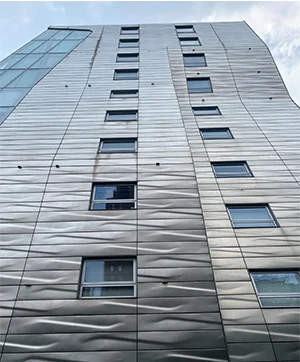
This not only enhances the building’s functionality but also adds a layer of interactivity to its exterior, creating a dynamic visual experience. Sustainability continues to be a driving force in façade design. In the past year, we have seen a surge in the use of eco-friendly materials & energy-efficient technologies. Green façades, featuring living plants as part of the building envelope, have gained popularity for their aesthetic appeal and environmental benefits. Additionally, solar-responsive façades, equipped with photovoltaic panels, showcase a commitment to renewable energy sources, merging sustainability with technological innovation.
Material experimentation has been a key theme, with architects pushing the boundaries of traditional construction materials. Transparent façades employing advanced glass technologies provide buildings with a sense of openness while maintaining thermal efficiency. On the other end of the spectrum, the use of unconventional materials like perforated metal panels and composite materials has expanded, offering architects new possibilities for texture, pattern, and visual interest.
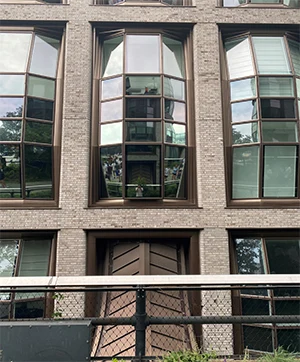
Minimalism has maintained its stronghold in façade design throughout the year. Clean lines, monochromatic palettes, and simple geometric shapes continue to dominate, reflecting a timeless aesthetic that complements various architectural styles. The emphasis on minimalism not only contributes to a modern & sophisticated look but also aligns with the growing interest in decluttered, functional spaces. A trend that has gained traction and shows no signs of fading is the integration of smart technologies into façades.
From interactive LED displays to intelligent shading systems, buildings are becoming increasingly responsive and communicative. Smart façades not only enhance visual appeal but also contribute to energy efficiency by optimising natural light and ventilation based on real-time data.
Looking ahead, the façade landscape is poised for further innovation. The coming year is likely to witness an increased focus on biophilic design, emphasising the connection between humans and nature.
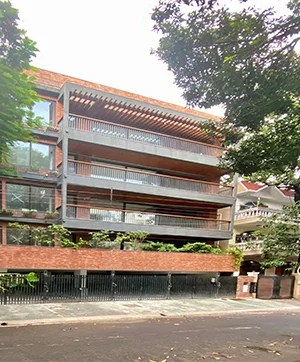
Façades featuring more greenery, natural materials, and designs inspired by organic forms are expected to take centre stage, fostering a sense of well-being and harmony with the environment. Moreover, advancements in nanotechnology may revolutionise façade functionalities. Self-cleaning and self-healing materials could become more prevalent, reducing maintenance costs and extending the lifespan of buildings. These innovations not only address practical concerns but also contribute to the overall resilience and longevity of architectural structures.
In conclusion, the past year has seen a diverse range of trends shaping the façade design landscape, from dynamic and sustainable solutions to material experimentation and technological integration. As we look forward, the fusion of biophilic design principles and cutting-edge technologies is poised to define the next chapter in façade innovation, promising a future where buildings not only reflect our values but also contribute to a more sustainable and visually captivating urban environment.
